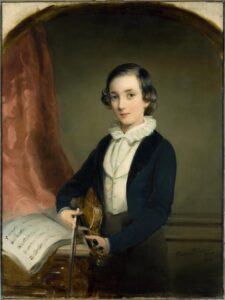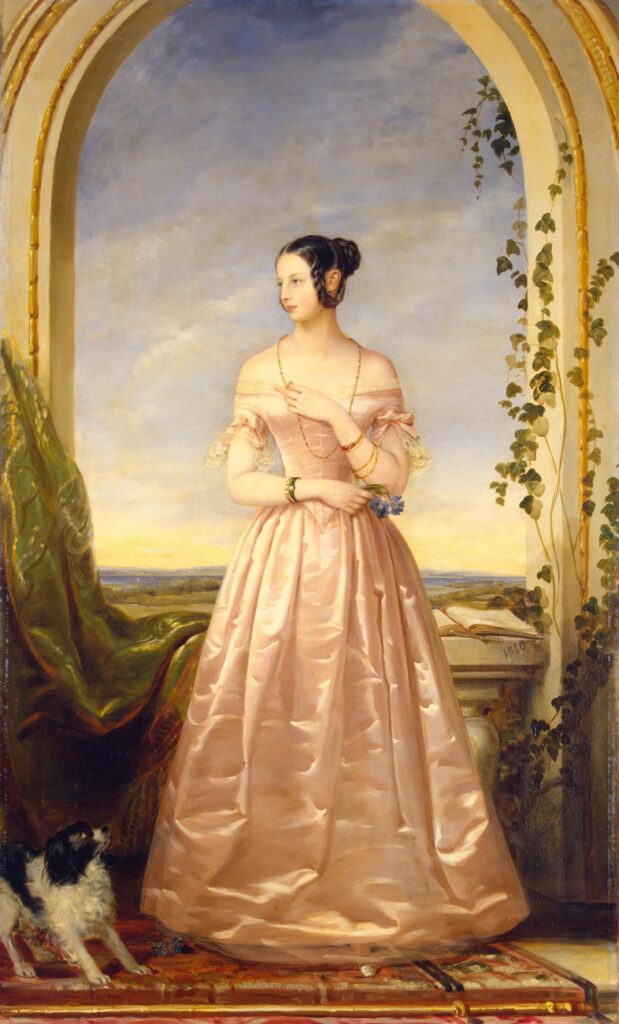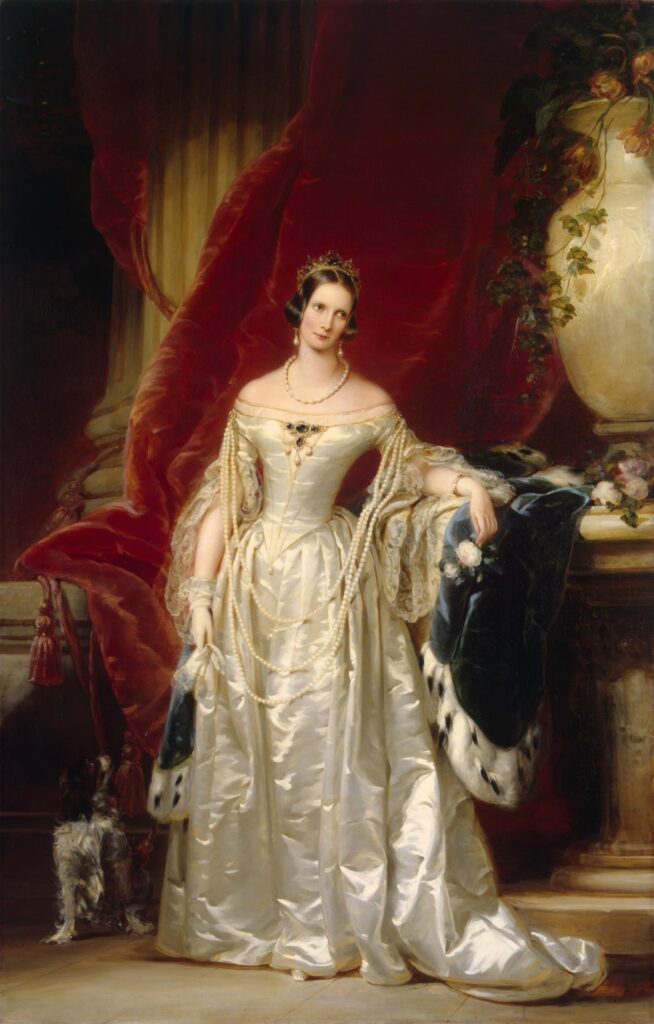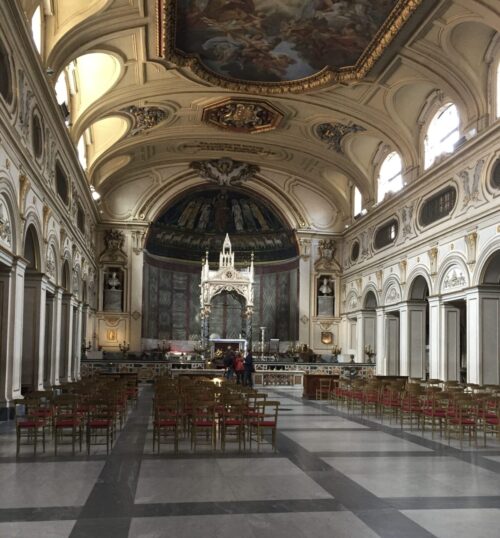
I feature several real people in the description of Christina’s time around the Russian royal family. In the book I have her travel to St Petersburg by carriage with the Yusupov family. I chose this family because she obviously knew them well and often painted them. I love this painting of Princess Zinaida, who was extremely beautiful and her son Nikolai closely resembled his mother. The State Hermitage Museum owns two paintings of Zinaida and there are many in other Moscow and St Petersburg galleries. She also painted her mother-in-law, Princess Tatyana.
Images are used from www.hermitagemuseum. org, courtesy of The State Hermitage Museum, St. Petersburg, Russia.

Nikolai was a gifted violinist and grew to become a skilled composer and musician. It was typical of Christina’s style to paint her subject with a favourite instrument or book, perhaps it made them more at ease? It was also common for her to paint women and children with family relationships. I was able to trace sisters, daughters, mothers and cousins through her London based sitters, one led to the other. This suggests to me that she was not only a skilled portraitist but also pleasant company. Personal recommendations most likely led her to St Petersburg. Her first Russian sitters in Paris seem to have been the Baryatinskaya sisters. A family who were friendly with the Romanovs.

This painting of fifteen-year-old Grand Princess Alexandra Nikolayevna (the family called her Adini) sparked the beginning of my research into Christina Robertson. Just like my fictional character Anna I stood in front of this painting first, then discovered nearby, the other four enormous paintings by a Scottish artist I’d never heard of. How was that possible?
The paintings in the Romanov Gallery of Adini, her mother Empress Alexandra Fyodorovna, the Empress’s two other daughters Olga and Maria and her son’s wife Maria, are all over two metres tall. Such big paintings show off Christina’s extraordinary skill in painting fabric. Both Adini and her mother are holding flowers. I think Adini’s flower is a cornflower, which symbolised hope for the future. Especially sad when we know this young princess died in childbirth four years later.
Images are used from www.hermitagemuseum. org, courtesy of The State Hermitage Museum, St. Petersburg, Russia.

Critics at the time accused Christina of flattering her subjects. Empress Alexandra was actually in her forties when this painting was done. However Christina was a society portraitist, just like airbrushing in contemporary magazines, she intended to flatter. The Tsarina was in an unusually loving relationship with her husband Tsar Nicholas I but at this stage just like Christina Robertson she had endured many births and lost a baby, her health was frail. Perhaps Christina felt a youthful flattering portrait was well earned.

While I admire Christina’s skill in large format portraiture, I also loved this painting of Adini and her elder sister Olga. This is an example of one of Christina’s ‘miniature’ paintings, only 36 by 29 centimetres. Even on this small scale she beautifully recreates the delicacy of the lace across Adini’s shoulders. We can also guess that the family loved their black and white spaniel, since the dog appears in all the paintings.
Images are used from www.hermitagemuseum. org, courtesy of The State Hermitage Museum, St. Petersburg, Russia.
